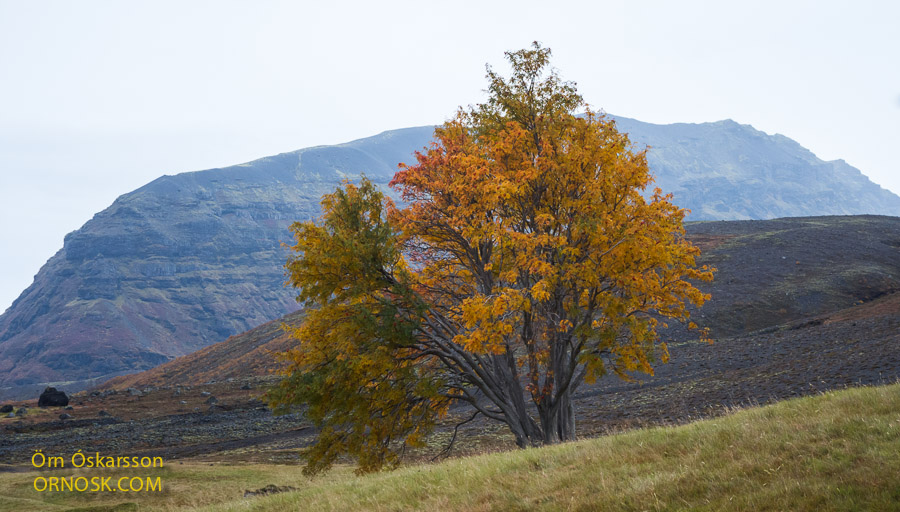We sure have had a very white Christmas this year. The snow has made everything especially Christmassy just the way we like it.
There is no denying that the snow has made the Advent and Yuletide extra festive this year.
We sure have had a very white Christmas this year. The snow has made everything especially Christmassy just the way we like it.
There is no denying that the snow has made the Advent and Yuletide extra festive this year.
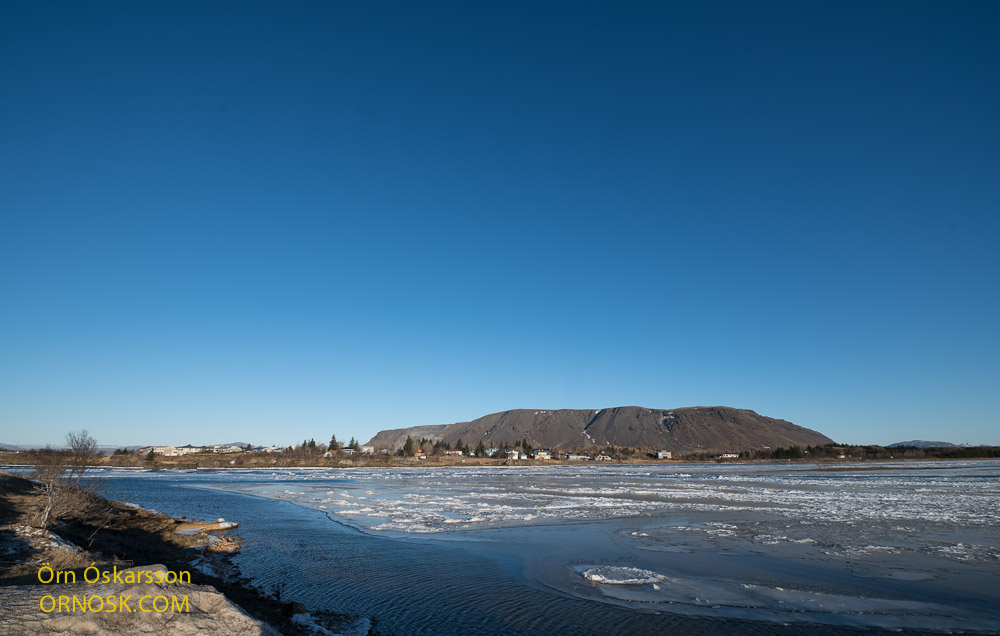
After a fairly mild February it has in the last ten days become freezing cold again. We are now in the middle of March so we have already started looking forward to spring. But no such thing in the forecasts. The cold air that engulfs us now comes straight from the North Pole, flooding down the Atlantic between Greenland and Norway, with Iceland in the middle. An air mass like this contains very cold and dry air. In the South of Iceland we have beautiful clear skies with considerable wind and temperatures well below zero. Because of the cold there is hardly a cloud to be seen and the sky is bright and blue. The frost has been between -2°C to -13°C most days. Here in Selfoss it has gone down to -15°C but in the North -25°C. And with the wind it feels much colder.
There has been quite a lot of solar activity lately with the Northern Lights dancing in the sky every night here in the south of Iceland. Since the sky is clear and no clouds conditions for experiencing and enjoying Aurora Borealis have been excellent, not to mention photographing. It is quite a challenge to capture the Northern Lights on camera in -10°C like yesterday evening when it was also windy. After 30 minutes outside your nose and fingers are frozen to the bone but of course it was worth it.
Similar weather is predicted in the coming weeks.

Waterfalls are beautiful in the winter frost. Sometimes more stunning than in the summertime. Here are pictures from a few main attractions in South Iceland taken in the end of January. They are Skógafoss, Seljalandsfoss, Gluggafoss and frozen cliffs in Eyjafjöll.
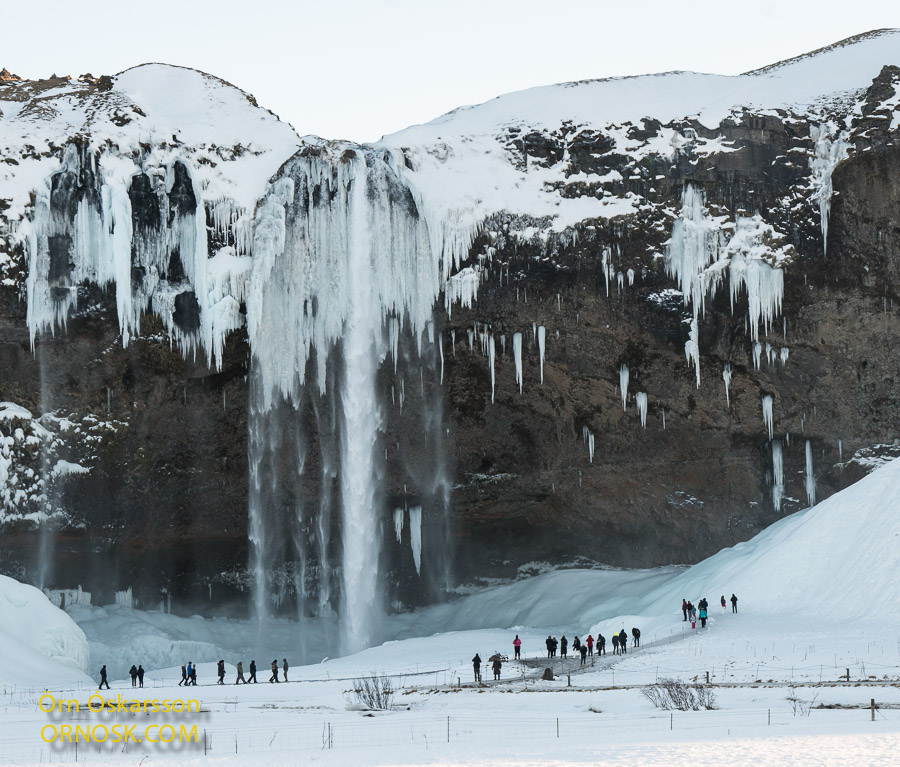
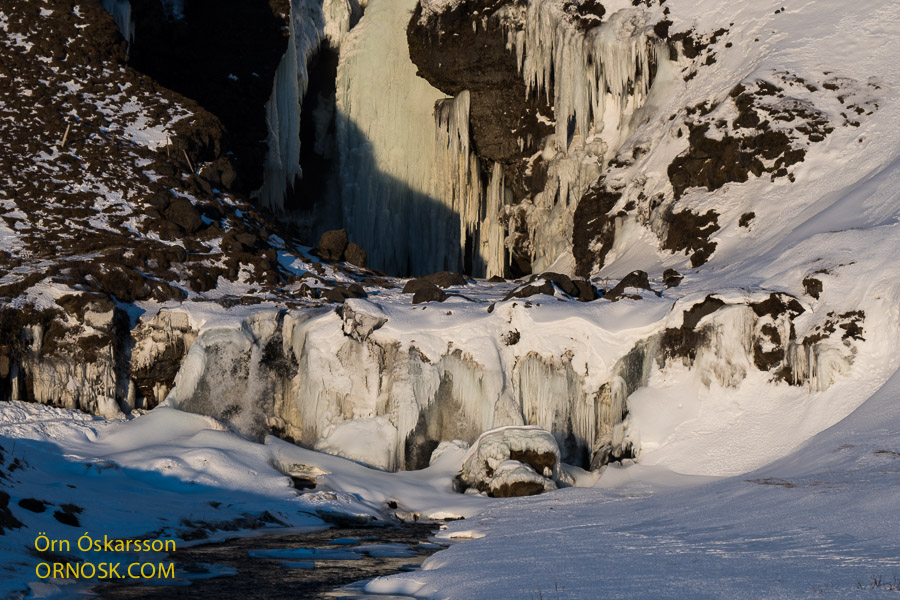
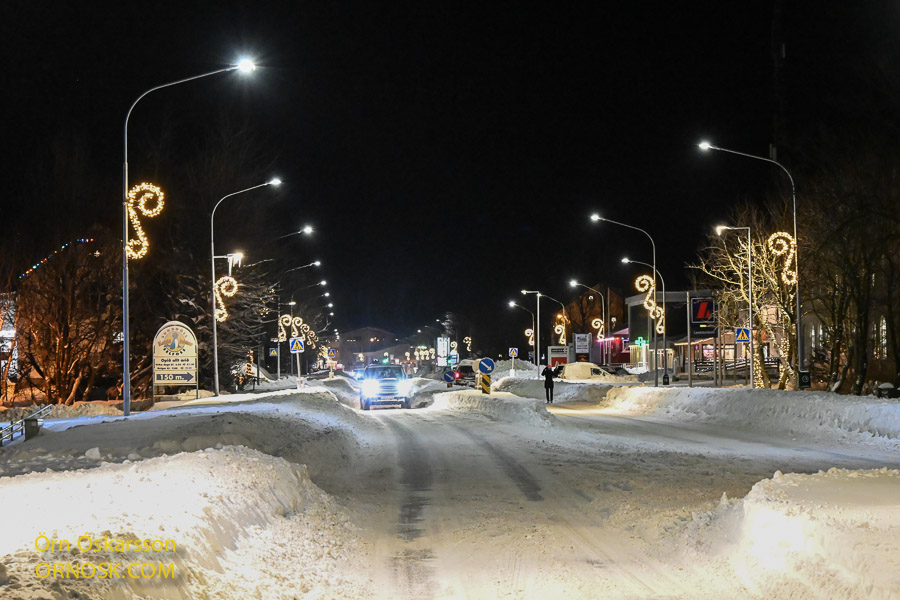
Since the beginning of December we have had temperatures well below zero, more than – 20° C some days. Last night it was -16° C. Circumstances have been compared to the winter of 1918, but temperatures this low for such an extended period have not been recorded here in Iceland since then. Talking about extremes, November also broke a record for being the warmest November since the beginning of the century.
Here we are in the middle of January and although forecasts predict temperatures above zero it is only for a day or two and then again frosty weather.
Here in Selfoss there are heaps of snow and with this continuing we do not foresee it melting until spring. Also, it will be interesting to see the heating bills once they arrive. Thanks to hot geothermal water our houses are mostly warm and only big users like swimming pools that have had to close down temporarily.
Not only has the weather been compared to 1918 but also the health of the nation. That year the Spanish flu, also known as the Great Influenza, is believed to have infected around 500 million people all over the world. Now cases of influenza, COVID, RS virus and other respiratory diseases have surged in Iceland and medical centres and hospitals are overcrowded with patients. Thanks to advances in medical science we are nowhere near what happened in 1918.
Now we should just try to enjoy the snow and the Northern Lights that are at a peak at this time of year.
We hope you enjoy these pictures from Selfoss, taken in December and January.
In Stuðlagil Canyon you can see one of Iceland’s largest and most beautiful collection of basalt columns. The canyon is in Jökuldalur, or Glacial Valley, in East Iceland. The drive from Egilsstaðir takes about one hour. The canyon is about 500 m long, with basalt columns of about 20-30 m on both sides of the river.
The longest river in Iceland, Jökulsá á Dal, also called Jökla, runs through the canyon. After the hydroelectric plant at Kárahnjúkar was built in 2007 there is less water in the river. The result is that more of the basalt formations in Stuðlagil Canyon have become visible making the site a very popular scenic attraction.
Stuðlagil Canyon is a place worth visiting. The hike from the east side takes less than 30 minutes (one way) if you drive over the bridge along a dirt road to the new parking area. Visiting the canyon from the west side does not involve a hike. There you go down the canyon by a steep stairway, about 200 steps, leading down to the river. We recommend going from the east side and taking the path although that takes up more of your time. There is more to see from there.
The canyon Stuðlagil has become a popular scenic attraction in the last decade.
One year has passed since the beginning of the volcanic eruption in Geldingadalir. It started March 19 2021 and lasted six months. The longest eruption in Iceland in the 21st century and in many ways different from what was expected. It started calmly but as the weeks passed it became more energetic, with regular pauses in between. In the end a lava shield had formed consisting of many layers of lava.
The eruption became well known worldwide and a lot of tourists visited the site of the eruption. Most with the aim of hiking to the sight and experiencing it from a short distance.
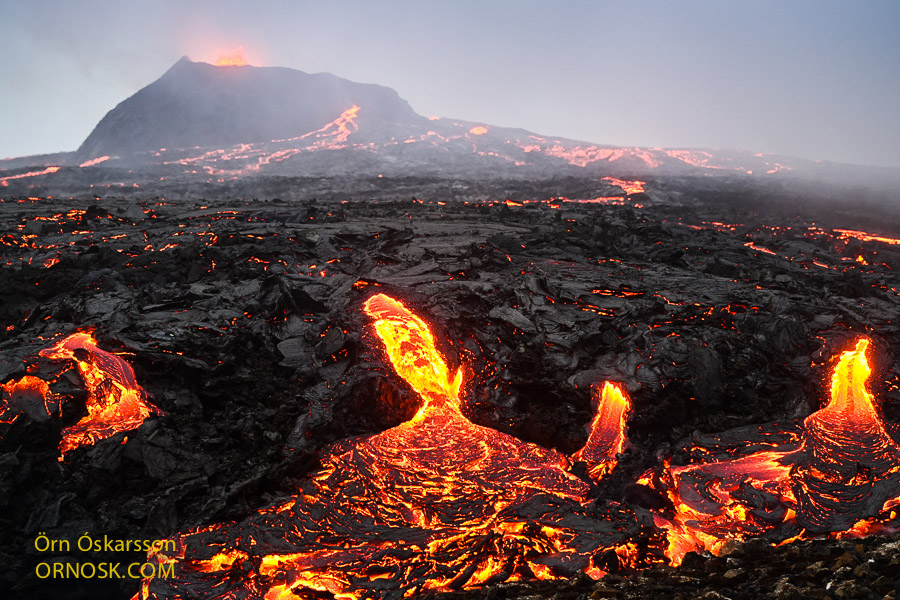
The eruption in Geldingadalir, Reykjanes Peninsula, is an extraordinary event, and the longest lived eruption in the 21 century, lasting 181 days. Although the area has been considered active, the last eruption in Reykjanes Peninsula was around 800 years ago. Geologists say that we are now entering an era of volcanic activity in this area which has several active volcanoes.
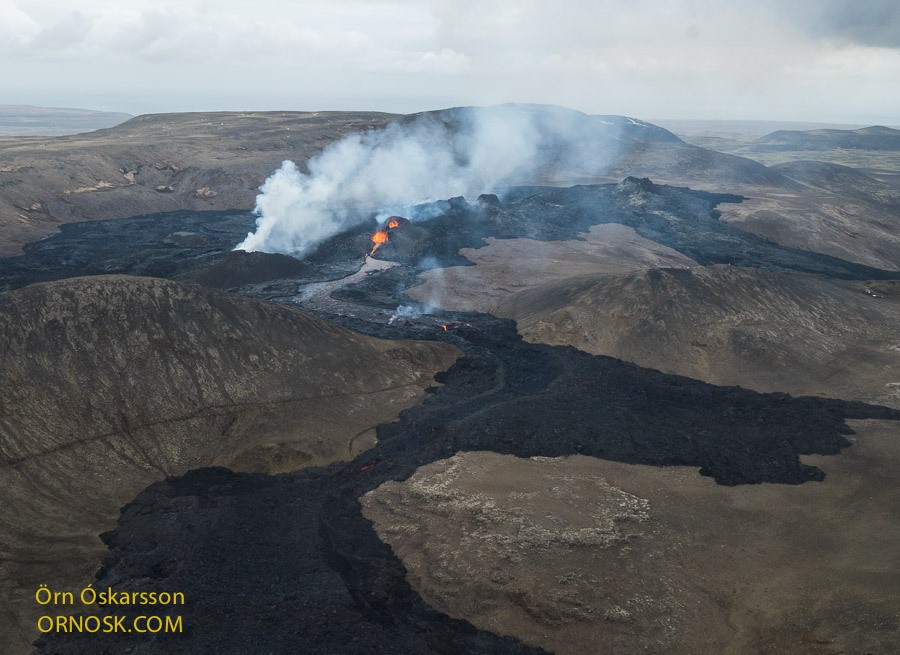
The eruption seems to be over but there are still earth quakes in the area and some smoke coming from the crater and the lava. In the middle of November the Icelandic Met Office confirmed that uplift has started again south of Fagradalsfjall and north of Keilir.
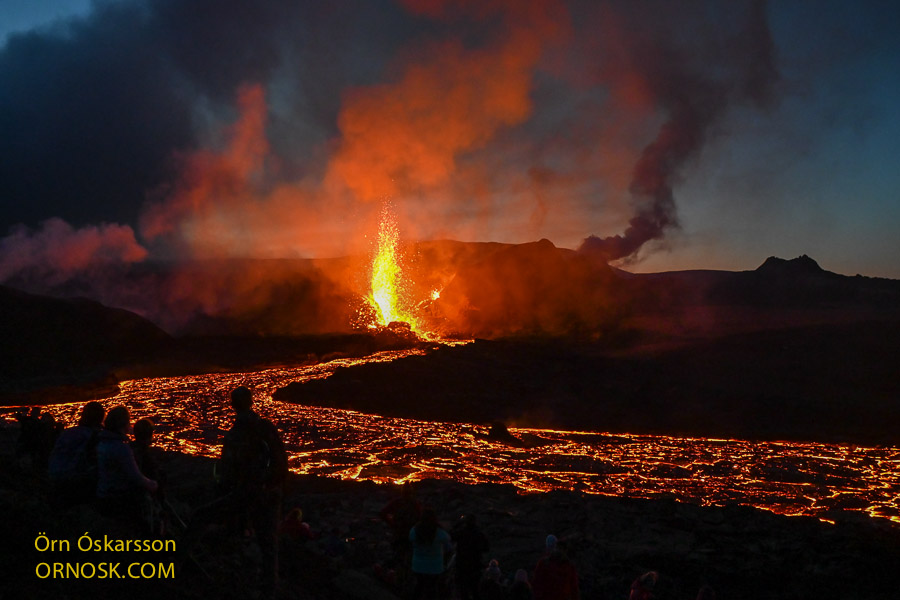
The eruption in Geldingadalir started on March 19 2021 after a period of earthquakes.
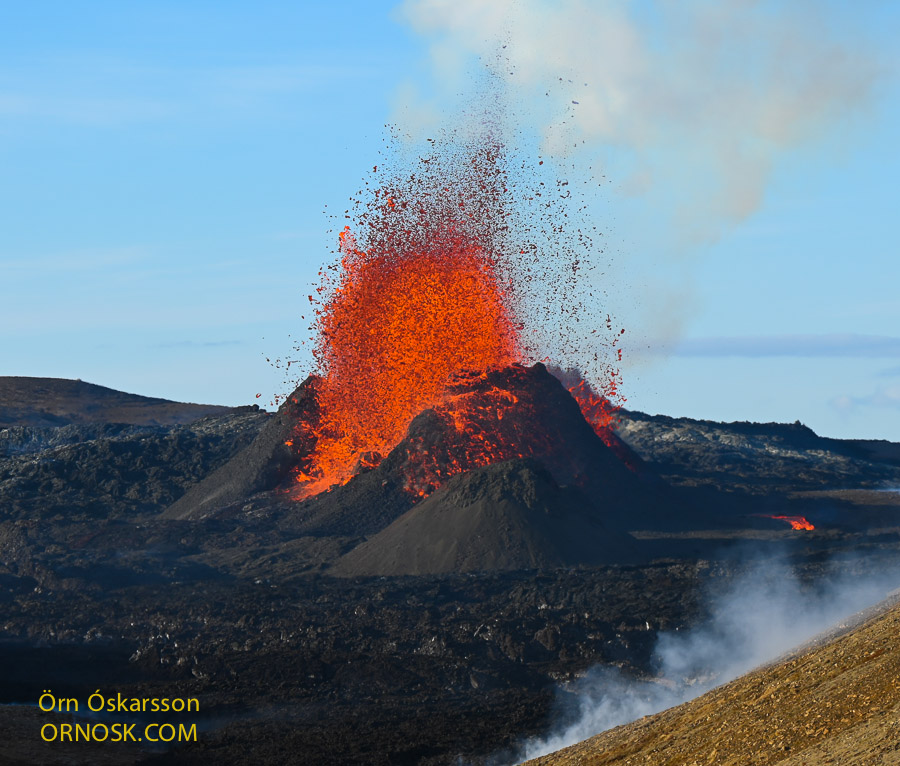
At first there were several rather small fissures that spewed lava and then closed, and a new one or two opened.
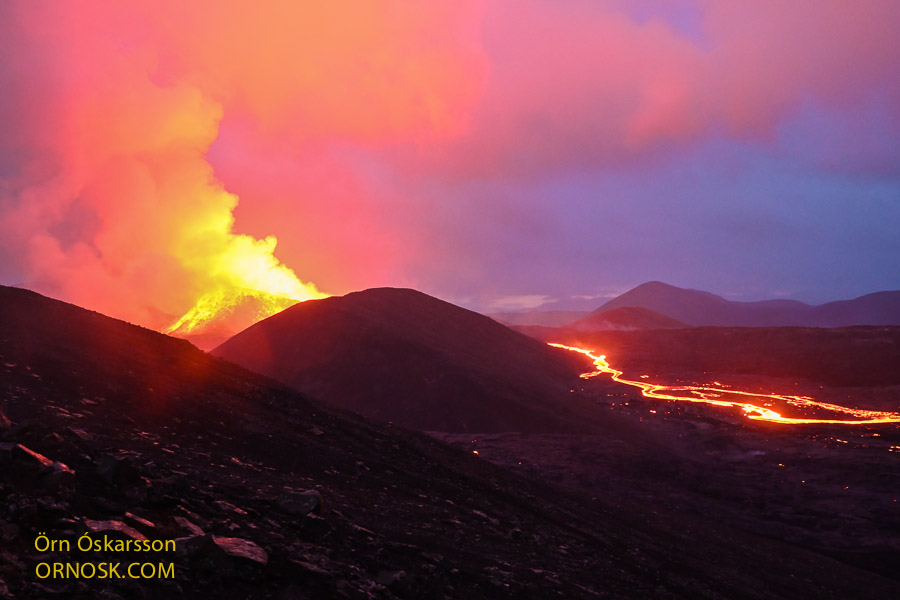
In April one crater became dominant and for six months it went from being very active to less active, with a few short dormant periods in between.
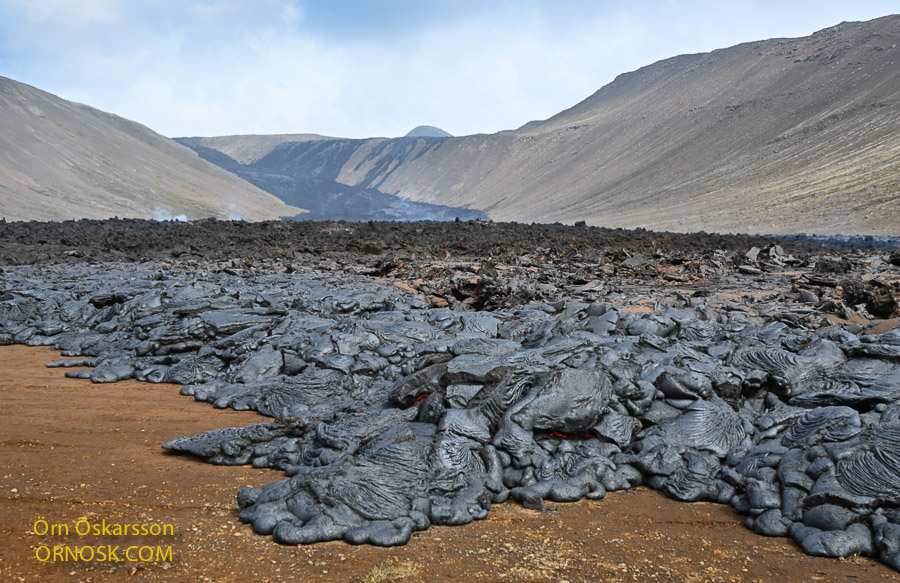
At times the lava flowed extensively and there was concern that it would reach the road and the town of Grindavík. But these were never in any actual danger. The lava flow was never constant resulting in accumulation of layers of lava in the same areas.
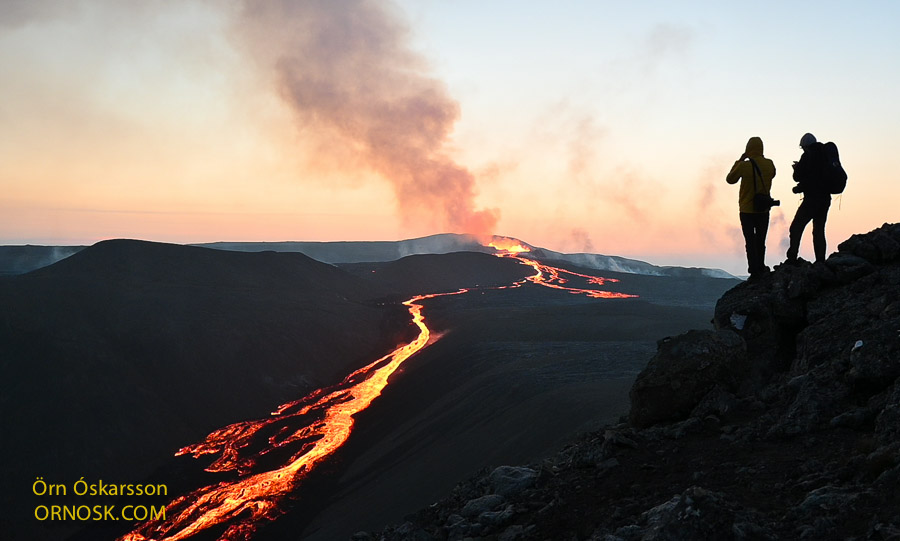
There was a lot of interest in this eruption and Icelanders as well as tourists came from all over the World to experience the sensation of seeing a volcanic eruption and feeling the heat from the flowing lava. Most days thousands of people hiked to the site and although it is not far from the urban area it is considered remote wilderness. Rescue teams had a busy time assisting and finding people who had lost their way or were injured e.g. broken bones. Although the eruption has ceased, the site is still a popular scenic attraction.
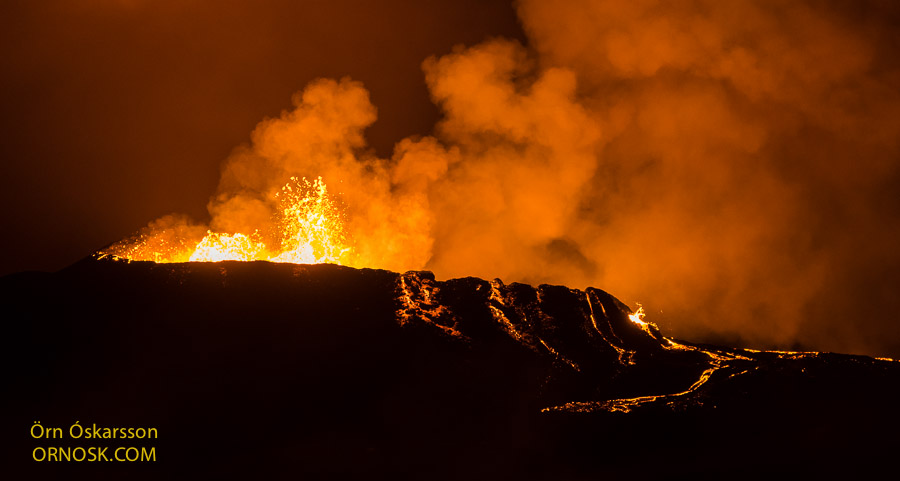
Ornosk went several trips to the volcanic site and took some interesting pictures. These are a few of them from different times.
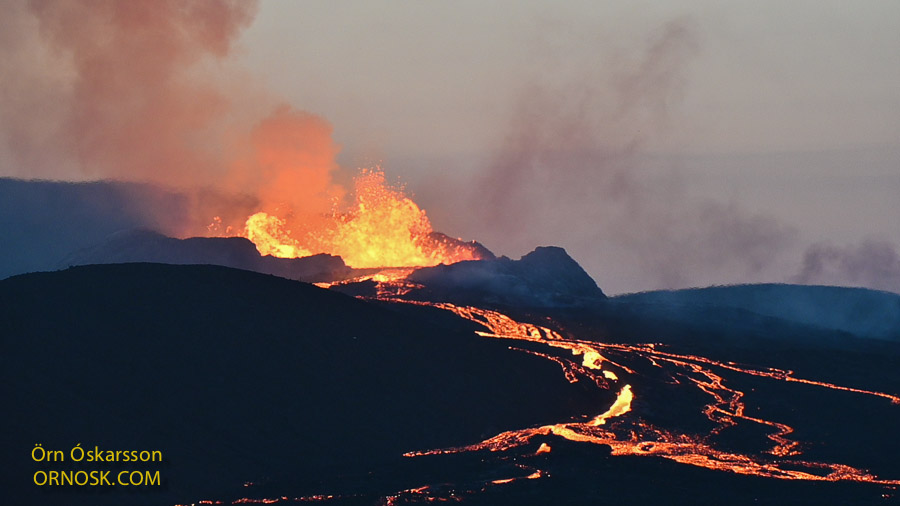
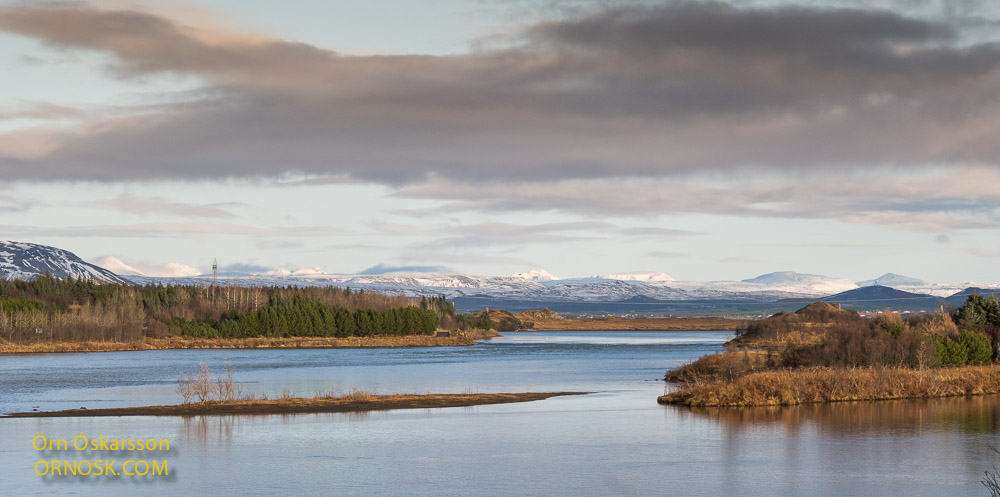
It is November already and Christmas around the corner. How time flies. Our web ORNOSK.COM has not been up to par the last year or so. However, better times are ahead. We have moved the hosting to Iceland and problems with SSL certificate and Facebook sharing have been resolved. The last two years have been very special for us, to say the least. Not only COVID restrictions but also some health issues. Yes, we have been seriously reminded that we are not growing any younger. – Our resolve is to continue blogging and emphasise the essential role birds have in our ecosystems.
There has been a peak in solar activity in the last few days but cloudy skies here in the South have often prevented us from seeing them clearly and photographing them. The North of the country, however, has enjoyed clearer skies and some magnificent shows of Aurora Borealis.
These photos were taken by Lake Þingvallavatn a few days ago when the the clouds gave way to the Northern Lights. Its colours were reflected in the frozen lake and the moon lit up the scenery.
A few nights ago we had some strong Northern Lights in green and beautiful red to pink colours. They could be seen dancing across the sky over Selfoss despite the lights from town.
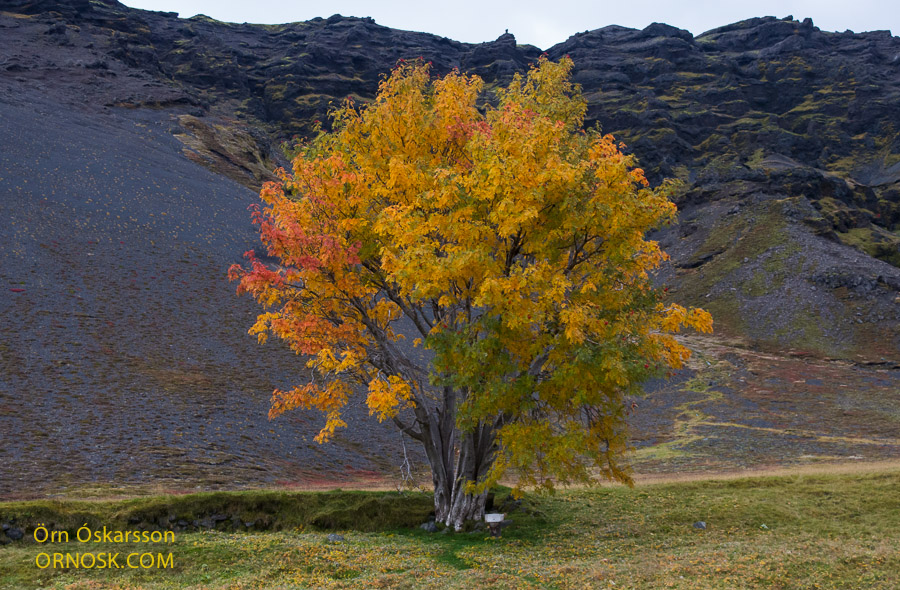
Again we post a picture of the beautiful Rowan tree at Sandfell in Öræfasveit planted in 1923 beside the family farmhouse. In 1947, however, this old church site and parsonage was abandoned. In South Iceland Rown trees rarely reach such a high age as this one, almost 100 years old.
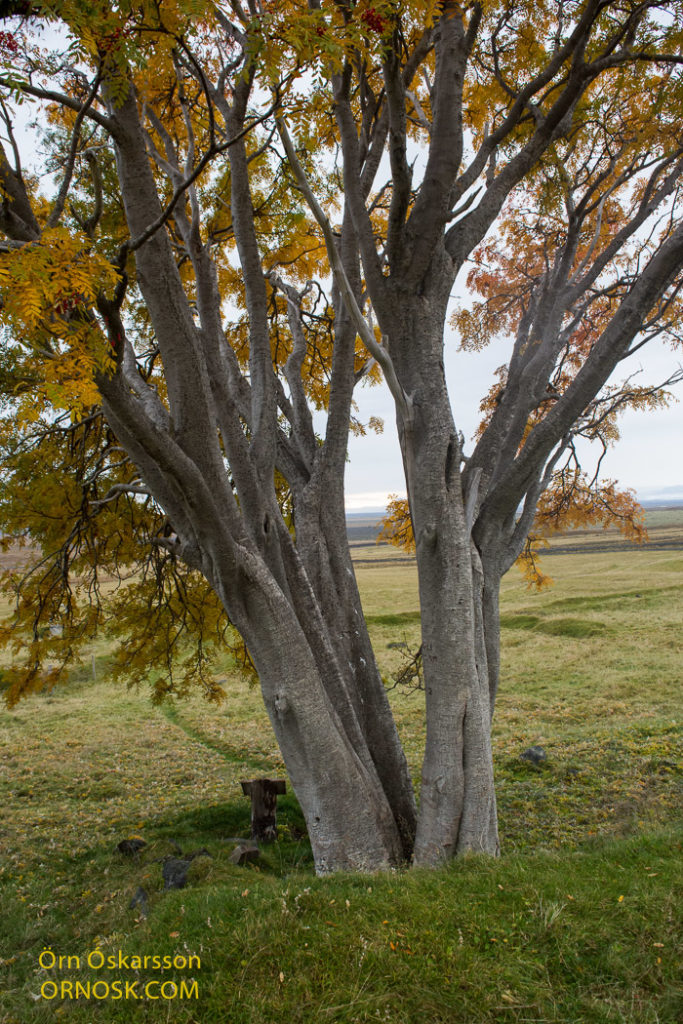
This tree is by many considered the most beautiful Rowan in Iceland. In 2015 it received the title “Tree of the year”by the Icelandic Forestry Association. It is 11 metres high with seven stems. In autumn each stems displays varied colours. This difference is due to the amount of water in each stem, resulting in these magnificent autumn colours of leaves in different stages of wilting. See also Tree of the year 2015.
